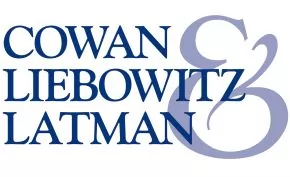A U.S. trademark application may be found to be void from the beginning if it is filed in the wrong name.
A U.S. trademark application may be found to be void from the beginning if it is filed in the wrong name.
It is common for a person to come up with an idea for a mark that is intended to be used in a proposed business. That person may develop and run the business himself or herself or may enter into a business relationship with another person for that purpose, whether or not formally documented. Later, either the creator or the partners may form a limited liability company or other entity to execute their business plan.
The time when an application is filed to register the mark in the U.S. Patent and Trademark Office (USPTO) determines who is the appropriate applicant.
Case in Point
One of the adverse consequences of naming an inappropriate applicant was illustrated in Hole In 1 Drinks, Inc. v. Michael Lajtay, Cancellation No. 92065860 (February 19, 2020).
Petitioner Hole In 1 Drinks, Inc. filed intent-to-use applications to register HOLE IN ONE (with and without a design) for sports drinks. Those applications were blocked by Respondent Michael Lajtay's registration of HOLE IN ONE for sports drinks. Petitioner sought to cancel the blocking registration on various grounds, one of which was that the blocking registration was void ab initio because Respondent did not own the mark when he filed his underlying intent to use application for registration.
A use-based application may be filed by "[t]he owner of a trademark used in commerce." Trademark Act § 1 (a), 15 U.S.C 1051 (a). An intent-to-use application may be filed by "[a] person who has a bona fide intention, under circumstances showing the good faith of such person, to use a trademark in commerce." Trademark Act § 1 (b), 15 U.S.C 1051 (b). (Emphasis added).
This technical difference reflects the principle that ownership arises from the use of a mark. Before such use, there is no owner. Even though Petitioner incorrectly alleged the Respondent was not the owner of the mark when the intent-to-use application had been filed, the TTAB decided this case anyway because the same operative facts would support the proper allegation that Respondent not have a bona fide intention to use the mark at that time.
Respondent filed the intent-to-use application in his own name, even though he and Darryl Cazares were negotiating or had already agreed to form Hole-In-One Drinks, LLC, the entity through which they intended to sell HOLE IN ONE branded beverages. In other words, under what the TTAB called these "shared circumstances," they jointly had a bona fide intention to use the trademark at the time the application was filed, and they should have been identified as joint applicants.
Respondent argued that he had created the trademark, but the TTAB pointed out that trademark rights are not gained by creating a mark, but through use of a mark. In fact, Petitioner was the first and the only user of the HOLE IN ONE trademark, and thus Petitioner was the owner of the trademark, not Respondent. As the TTAB said, "the existence of the limited liability company through which Respondent elected to conduct his business cannot be turned on and off at will to suit the occasion."
Thus, the TTAB granted the petition to cancel Respondent's blocking registration on the ground that the underlying intent-to-use application was void from the beginning because Respondent alone lacked the requisite bona fide intent to use the mark in commerce as of the filing date of the application. Presumably, Petitioner's two blocked applications will now proceed to registration.
Author's Note
When preparing to file an application to register a trademark in the U.S., you must consider the facts before naming the applicant.
1. Before the mark has been put into use in commerce:
- An individual alone may have the sole requisite intention to use the mark either himself or herself, or possibly through an entity that he or she will organize later, or through a licensee (because use by a licensee inures to the benefit of the licensor).
- Two or more individuals may jointly have the requisite intention to use the mark either themselves, or possibly through an entity that they will organize later, or through a licensee.
- An entity that already has been organized may have the requisite intention to use the mark itself or possibly through a licensee.
Whichever has the appropriate intention to use the mark at the time the application is filed should be named as the applicant.
2. After the mark has been put into use in commerce:
- The one or more individuals, or the entity, using the mark itself or through a licensee would be the owner(s) of the mark and should be named as the applicant.
3. If an application names one or more individuals as the intent-to-use applicant, and an entity is organized to use the mark after the intent-to-use application has been filed, Trademark Act § 10 (a) (1), 15 U.S.C § 1060 (a) (1), provides that such an application can be assigned to the entity only if:
- the entity is a successor to the business of the applicant, or a portion thereof, to which the mark pertains, if that business is ongoing and existing, or
- the assignment is made after a document has been filed in the USPTO stating that the mark has been used either by the applicant or by its licensee.
The content of this article is intended to provide a general guide to the subject matter. Specialist advice should be sought about your specific circumstances.

